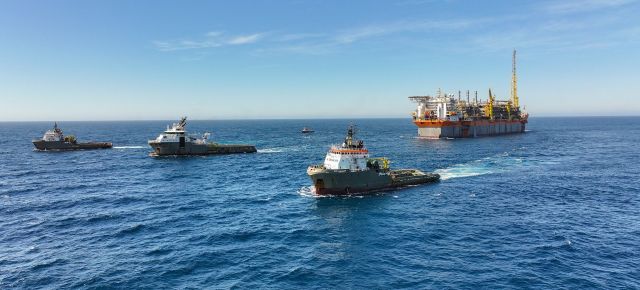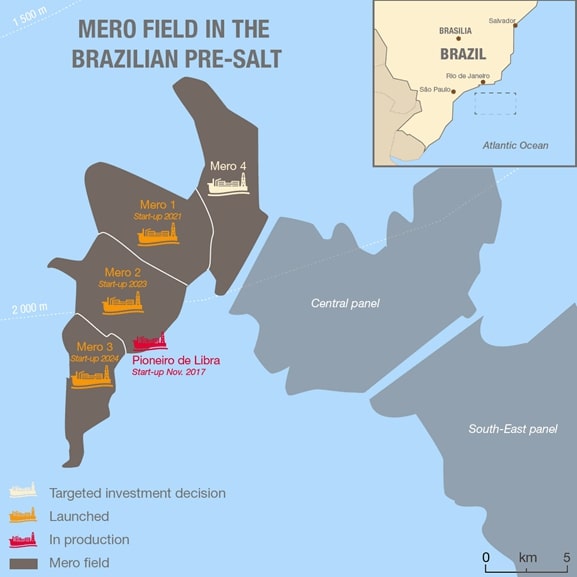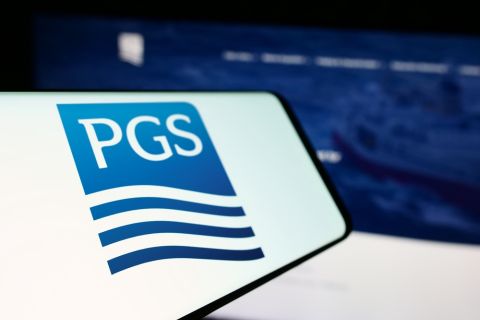
FPSO Sepetiba, the Phase 2 production facility, arriving in the Mero Field offshore Brazil. (Source: Petrobras)
Halliburton Co. will work with the Petrobras-led Libra Consortium to develop a digital twin for the Mero unitized field in the Libra Block offshore Brazil, Halliburton announced Dec. 11.
The digital twin for the pre-salt field system is expected to help the consortium reduce capital expenditures, accelerate production times and improve crude oil recovery rate using insights obtained in a real-time environment.
The digital twin is a virtual representation of the physical asset that replicates its behavior and characteristics, allowing operators to run “what if” scenarios to improve decision-making and maximize operational predictability for optimal field development.

Halliburton and Libra Consortium will develop an integrated and dynamic digital twin of the production system, including the reservoir, wells and subsea network. The digital twin will bring together asset sensors, data, and models, including 4D seismic, and smart completions through systems with a real-time view of the reservoir, wells, and facilities. According to Halliburton, this will assist with asset characterization, proactive reservoir monitoring, and planning and optimizing asset operations.
First production to the FPSO Marechal Duque de Caxias in 7,200 ft water depth is expected in 2024 from Phase 3 of the Mero development in the Santos Basin.
Petrobras operates the Mero unitized field in partnership with Shell Brasil, TotalEnergies, CNPC and CNOOC, and with Pré-Sal Petróleo SA (PPSA) representing the government in the non-contracted area.
Recommended Reading
PGS Wins 3D Contract Offshore South Atlantic Margin
2024-04-08 - PGS said a Ramform Titan-class vessel is scheduled to commence mobilization in June.
TGS Commences Multiclient 3D Seismic Project Offshore Malaysia
2024-04-03 - TGS said the Ramform Sovereign survey vessel was dispatched to the Penyu Basin in March.
AI Poised to Break Out of its Oilfield Niche
2024-04-11 - At the AI in Oil & Gas Conference in Houston, experts talked up the benefits artificial intelligence can provide to the downstream, midstream and upstream sectors, while assuring the audience humans will still run the show.
Betting on the Future: Chevron Technology Ventures’ Investment Strategy
2024-04-09 - After a quarter century, Chevron Technology Ventures seeks both incremental and breakthrough technologies with its early-stage investment program.
Tech Trends: AI Increasing Data Center Demand for Energy
2024-04-16 - In this month’s Tech Trends, new technologies equipped with artificial intelligence take the forefront, as they assist with safety and seismic fault detection. Also, independent contractor Stena Drilling begins upgrades for their Evolution drillship.





